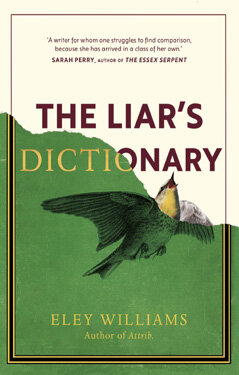I was awed by the majesty of Richard Powers' enormous, thought-provoking and imaginative novel “The Overstory”. Even though I felt some of the interlinking stories worked better than others, I was so compelled and impressed with how that book engaged with environmental activism in such a dynamic way. His new novel “Bewilderment” also addresses climate change and animal extinction but in a more concentrated story. It concerns Theo, an astrobiologist who seeks to demonstrate a complex method of searching for life on other planets, and his nine-year-old son Robin, a lively and unpredictable boy who cares passionately about the environment. As we follow their lives over the course of a troubled year, Theo struggles to care for his emotionally erratic son and allows him to be used in an experimental trial to stabilize the boy's behaviour. It's a method of behavioural training which inspires a surprising connection to his deceased mother Alyssa, an environmental lobbyist who tragically died a couple of years prior to the events in this novel. The combination of these elements forms an astoundingly moving and urgent story.
One of the most strikingly effective aspects of this novel is the dialogue between father and son which is heartfelt and convincingly realistic. Robin's passionate earnestness and straightforward idealistic logic constantly threatens to overwhelm Theo who is all too aware of the complex workings of their society which is tragically regressing under a populist leader. Robin's dialogue is italicised while other characters' speech is in quotes and this typographical distinction allows his words to chime with a moving innocence. It reminded me of the intimate way the father and son converse in Cormac McCarthy's tremendous novel “The Road” as their exchanges convey a patient exchange of ideas and touching emotional bond. Part of Theo's job is to speculate what sort of life might develop on other planets given the specific environmental conditions of these distant worlds. His method of stabilizing his son's erratic moods is to imaginatively transport them to the potential living planets he's devised. These sections convey a wonderful intimacy between parent and child.
This story is set in a near future which already feels alarmingly close to our present reality. Funding for science is being reduced, extreme weather causes havoc in communities, new forms of disease are rapidly spreading, the democratic process of voting is undermined by presidential skepticism, journalists are suppressed and the solution for dealing with emotionally unstable children is to drug them with pharmaceuticals en masse. Given these overwhelming threats, it's no wonder that Theo's son feels extremely anxious: “The question wasn't why Robin was sliding down again. The question was why the rest of us were staying so insanely sanguine.” Inspired by a Greta Thunberg-type character named Inga Alder, Robin is determined to take practical efforts to inspire change or contribute to the benefit of the world in any small way he can. Though the novel presents a grim-mirror to our rapidly devolving present times, there's hope and optimism amongst a new generation determined to reject the self-centred logic of our society and preserve the environment.
It's interesting how Powers has created a novel which is so strikingly realistic in many ways, but can also be read as science fiction because of the way it creatively speculates about alien species and societies. It also feels at times like a ghost story because of the lingering presence of Alyssa. But the real heart of this book is the bond between father and son amidst the chaos of the world. They discover a beautiful tranquility by camping in the mountains where nature comes magically alive, but these precious moments are sadly cut short by pressures from the larger world. The real tragedy of this story is not that the world is falling apart but that people have become so complacent about its destruction while passively looking at their phones: “In this place, with such a species, trapped in such technologies, even a simple head count grew impossible. Only pure bewilderment kept us from civil war.” This is such a tender, expertly-written and emotionally gripping tale which has the power of an alarm bell signalling that our planet is in crisis.























